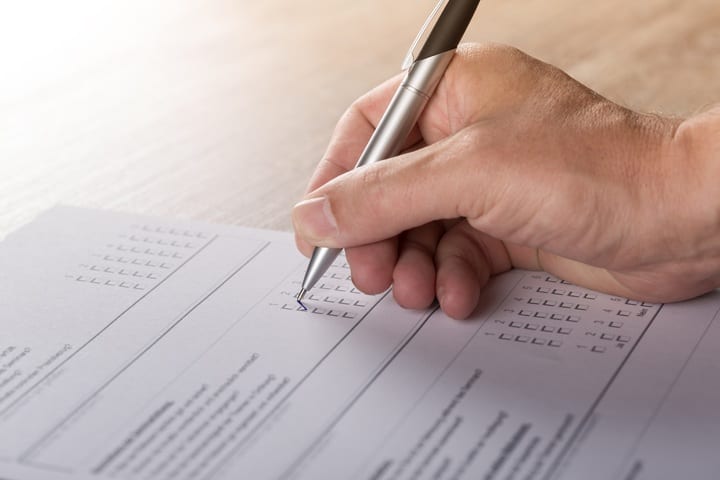How Do I Read My Home Inspection Report?
Whether you’re a property seller or buyer, you will be dealing with a home inspection report. You may feel a sense of trepidation especially if it’s your first time receiving this type of report. This may be overwhelming for a seller who has little room to fix property issues. This is also a big deal to a buyer, according to Innovative Property Solutions, as this makes you aware of issues that you or your seller will need to budget for or address.
RELATED: ARE HOME INSPECTIONS WORTH THE COST?
Home Inspection Report
Home inspectors like me give you an unbiased document after careful evaluation of the property. It presents the present condition of the property and its structural, systems, and mechanical issues. It typically won’t include repair estimates though. The length of the report can be as few as 15 pages to almost a hundred pages. It should include high-quality photos for a detailed view of the defects found in the property.
Reading a Home Inspection Report
To start, focus on the General Summary portion of the report. We actually put this at the beginning of our reports. Prioritize the health and safety issues, since these are covered by Florida State Laws and/or Standards of Practice (SOP’s), must be included.
There are recommendations provided and you can determine if there’s electrical issues, damaged roofs that can lead to water damage, foundation or other structural issues, HVAC, and water heater issues. Remember this is only a summary, and not all issues are included in the General Summary, especially simple recommendations and/or observations. Make sure to read the entire report for all findings and observations. The General Summary is only the start.
RELATED: 20 THINGS YOU SHOULD KNOW ABOUT YOUR HOME INSPECTION
Home Inspection Report Sample Details:
General Information Pertaining To The Property And Its Conditions
Here’s where you’ll find the year built, construction, and foundation type and any other information that you may need to know about the home.
Details About Main Systems Of The Property
In each section of your report, you’ll see informational comments about each major system. This can include the type of system, heating/cooling source, capacity, etc.
Examples of the type of information you’ll find:
- Foundation structure of the property
- Exterior information about the condition of the balconies, driveways, walkways, and porches
- Roof materials
- Plumbing system pertaining to pipes, drainage, and water heater
- Electrical systems such as breakers and fuses
- A/C and heating systems
Other inclusions will be the conditions of doors, windows, walls, ceiling, floor, chimneys, and attic. The report will highlight safety issues and point out repair solutions.
Photos Of Property Issues
Photos in an inspection report are crucial to visually document and show the existing problems in the property. This is also an easy way for buyers to present evidence of problem areas to sellers when renegotiating the price of the home.
Thermal imaging equipment may be used at times to scan for moisture, air leakage, poor insulation, or overheating electrical components. Photos may also make it quicker to estimate repairs when asking service contractors. They can often surmise the problem and scope to fix it upon seeing the pictures.
Inspection Report Summary
Remember, the first part of the report will show you a summary of the home inspection and the issues involved. Usually, a rating is given to diagnosing the severity of an issue. Showing the summary report to the seller will be the start of renegotiation. Huge defects will provide greater room for negotiation such as those concerning safety and health issues. When the repairs needed are minimal then they’re generally not significant enough to make much price difference.
RELATED: HOME INSURANCE IN FLORIDA: WHAT YOU NEED TO KNOW
Using Your Home Inspection Report In Negotiations
When a buyer receives the report from the inspector, they have the sole power to decide to push through with the purchase or renegotiate the price of the property. They can also choose not to continue or ask the seller to deal with the repairs first. If a buyer requested for the inspection report, they also have the option of providing you with a copy or not if you’re the seller, but they are not required to do so.
As a seller doing a pre-listing inspection, you need to be adaptable and prepare for expected situations. Here’s what you can do:
- Negotiations are inevitable
You can always expect to encounter property issues, whether major or minor. The best thing you can do is to ask an experienced real estate negotiator to be present in the meeting with a buyer. This may take a while as the buyer will refer extensively to the report and push for repairs to lessen their expenses.
- Be present when the inspection is conducted
Appearing on inspection day will provide you with more information and you can also gauge the severity of the problem. It will be easy to understand the data presented on the inspection report when you’re around during the inspection itself.
- Source out second opinions for professional experts, if recommended
There’s always room for human error in an inspection report. When a buyer is requesting costly repairs, have a trusted specialist double-check the concern, too. You might find that the problem is less severe as reported and you won’t be replacing expensive equipment or spending on expensive repairs.






